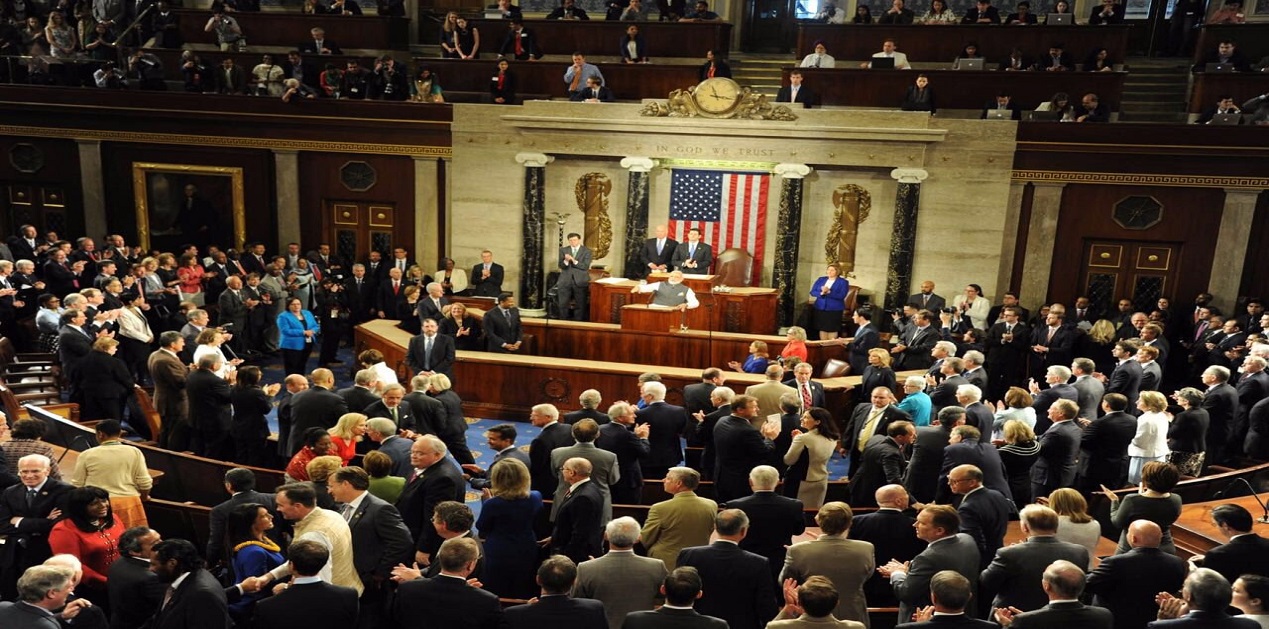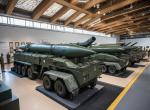On June 22, Prime Minister Narendra Modi will enter the Chamber of the House of Representatives on the Capitol Hill, to record a rare distinction. He will be joining a handful of world leaders who addressed the Joint Sitting of the United States Congress for the second time.
By now we know the Thursday address will pitch PM Modi in the league of the likes of British Prime Minister Winston Churchill, Israel PM Benyamin Netanyahu and South African President Nelson Mandela who addressed the joint session of the Congress, on occasion more than one.
The U.S. Congress is an unique institution and one of the three branches along with the Executive and the Judiciary with clear separation of powers under the Constitution.
Over the past few decades, India has enjoyed bipartisan support on the Hill. Irrespective of the party that controls the House/Senate or the Congress itself, both the Democrats and the Republicans are supportive of India and committed to be partners in its journey with India.
The first formal engagement of an Indian leader with this institution dates back to 1949. The year was when then Prime Minister Jawaharlal Nehru was invited to a reception by the House of Representatives. In his address to the assembly, PM Nehru unfolded the aspirations of a young nation that threw away the yoke of the British and achieved freedom, barely two years ago.
The then Speaker Joseph W. Martin introduced PM Nehru as a “a man learned not only in the ways of the world, but also in the ways of democracy…” and recounted a report of Nehru’s popularity of how at a public event, several thousand people stayed on and tried to hear him even after the public address system failed.
Sharing his vision of development anchored in the country’s march toward self-sufficiency in agriculture and emphasis on industrialisation, Nehru interspersed the address as to how the country was influenced by the American Constitution as India set itself on the task of drafting the document for the Republic.
Even then, the undertone was that India’s voice may appear somewhat alien to the US. Nehru described this as a distinct opinion of an ancient civilisation which at the same time renewed itself learning from America and the other countries in the West.
Since then, five Indian Prime Ministers addressed the joint sitting starting with Rajiv Gandhi (1985), P.V. Narasimha Rao (1994), Atal Behari Vajpayee (2000) Manmohan Singh (2005) and Narendra Modi (2016).
Seven years ago—June 8, 2016 to be precise-- PM Modi captured the essence of the nature of altering India-United States landscape with a categorical assertion of the relationship having overcome ‘hesitations of history’.
The reference was bookmarked to the reluctance on either side that marked the uncertain nature of ties between the two democracies, which Prime Minister Vajpayee underscored during his address to the Congress in the year 2000.
Addresses of each of the Prime Ministers to the august assembly is an essay mirroring contemporary global, regional and other challenges in the bilateral context; the changing world order and expectations exploring possible areas of cooperation between the two countries.
If this meant a hope to secure high-end computing technology in the 1980s; in the 1990s, it was anticipation of access to dual-use technology; the changing contours of world trade; and, the United States insistence on adherence to nuclear non-proliferation during Vajpayee’ era.
It graduated into a comfort zone where the United States backed India to end what was characterised as ‘nuclear apartheid’. The India-US Civil Nuclear Cooperation agreement, whose contours began taking shape in early 2000s, was cast in stone eight years later. This signal piece of legislation by the Congress altered the nature and course of the relationship once for all.
Today’s India and the United States are comprehensive strategic partners with engagement across several sectors ranging from deep sea to space. The Defence Framework Agreement of the early 2000s transformed eight years ago. India is now declared a Major Defence Partner with some in the Congress suggesting New Delhi could be drafted as a non-NATO ally.
In all the momentous changes in policy towards India, the United States Congress plays a crucial role with the body delivering a major concession in amending its domestic laws to allow India, a non-NPT signatory country, access nuclear technology for civilian use and making exception in allowing sales of high-technology military weapons to India.
At present, the US Congress wants the United States to assist India in procuring weapons and platforms from the country and reduce New Delhi’s dependence on Russia. The House adopted a resolution to grant India an exemption from CAATSA (Countering America’s Adversaries Through Sanctions Act), a law that attracts sanctions against the country for procuring the S-400 missile system from Moscow.
Yet, for all the bipartisan support and cooperation across various sectors there are intermittent voices in the Congress when members flag concerns against India on issues. These vary from commitment to democracy; rights of minorities, restricting space to civil society; and, the farm laws, which the government eventually took back. Many of these issues get amplified on account of pressures from constituents and resonate.
It is here that India, through its diplomats and influential community of Indian-Americans should remain engaged with different shades of views on The Hill, which too harbours different perceptions. Within the two political parties, there are groups holding diverse views.
PM Modi during his 2016 address did realise the variance to state: “…as we deepen our partnership, there would be times when we would have differing perspectives; but since our interests and concerns converge, the autonomy in decision making and diversity in our perspectives can only add value to our partnership.” The Thursday address by PM Modi offers another opportunity to address these differences.
(The paper is the author’s individual scholastic articulation. The author certifies that the article/paper is original in content, unpublished and it has not been submitted for publication/web upload elsewhere, and that the facts and figures quoted are duly referenced, as needed, and are believed to be correct). (The paper does not necessarily represent the organisational stance... More >>
Image Source: https://twitter.com/narendramodi/status/740587219803594752/photo/1









Post new comment